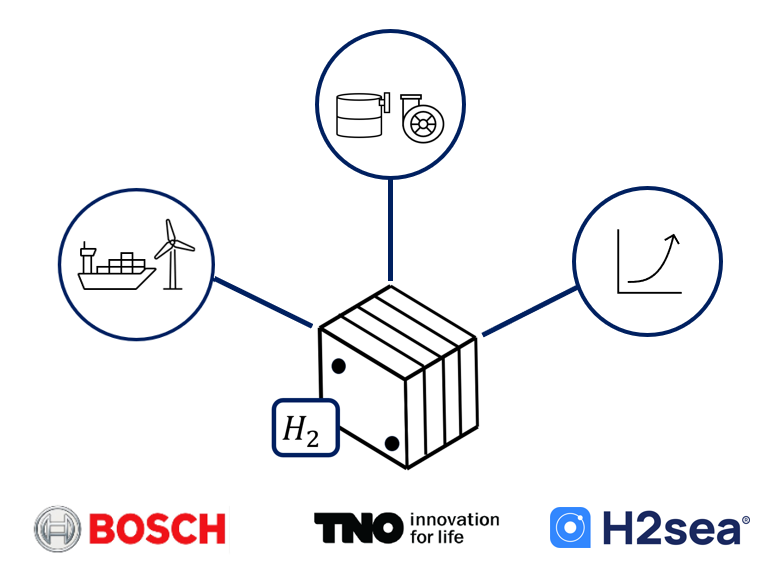The recently concluded IPOSH (Innovative Process Design for Offshore Hydrogen) project—led by H2sea, Bosch Thin Metal Technologies, and TNO—claims to have achieved a 10–20% reduction in the Levelised Cost of Hydrogen (LCOH). While the figure is significant, the implications rest heavily on whether the novel system integration approach can translate into real-world commercial deployments.
Offshore electrolysis has gained momentum as a complement to offshore wind build-out, enabling direct hydrogen production at sea and alleviating grid bottlenecks. Yet most projects adapt onshore designs for offshore conditions—an approach that has historically led to suboptimal performance and inflated costs. The IPOSH consortium challenges this paradigm by integrating all key components—electrolyser stacks, balance of stack (BoS), and balance of plant (BoP)—from the outset.
Traditional electrolyser design workflows often prioritise the stack, treating other subsystems as secondary and adjustable. This results in inefficient spatial layouts, maintenance difficulties, and energy losses. The IPOSH project’s core innovation lies in inverting this logic: it treats the full system architecture as a primary design space, enabling structural efficiencies that are otherwise foregone in retrofits.
A critical aspect of IPOSH’s reported LCOH reduction stems from its lifecycle-based design methodology. This approach accounts for capital costs, operating profiles, maintenance cycles, and decommissioning in offshore environments—factors frequently underrepresented in early-stage hydrogen techno-economic assessments.
Key modelling variables included module sizing, accessibility for maintenance, and the frequency and logistics of stack replacements under harsh marine conditions. By simulating multiple operational scenarios, the study was able to identify design levers that extend stack lifetime and reduce unscheduled interventions—two factors that typically drive up offshore hydrogen costs.
The project also emphasized transport and installation logistics, often overlooked in R&D settings but material to offshore project economics. Subsea connections, structural load limits, and platform stability were factored into the design envelope, ensuring that cost reductions are not offset by execution-phase overruns.
The reported 10–20% LCOH reduction is based on model-driven projections rather than real-world operational data. With the LCOH for offshore green hydrogen currently estimated between €8 and €12/kg depending on project location and configuration, even a 20% cut leaves the output significantly above market parity with fossil hydrogen, which ranges from €1.5 to €2/kg.
Nevertheless, such reductions are necessary to bring offshore hydrogen within the range targeted by EU policy frameworks such as the REPowerEU plan, which envisions 10 million tonnes of domestic hydrogen production by 2030. To align with those targets, hydrogen LCOH would likely need to fall below €3/kg—a figure that current offshore projects, including pilot-scale initiatives in the North Sea, have yet to approach.
Perhaps the most consequential outcome of IPOSH is its push toward system-level design standards tailored to offshore electrolysis. The findings contribute to a growing body of work suggesting that without bespoke offshore solutions, hydrogen cost curves will not bend fast enough to meet policy or market expectations.
Stay updated on the latest in energy! Follow us on LinkedIn, Facebook, and X for real-time news and insights. Don’t miss out on exclusive interviews and webinars—subscribe to our YouTube channel today! Join our community and be part of the conversation shaping the future of energy.
